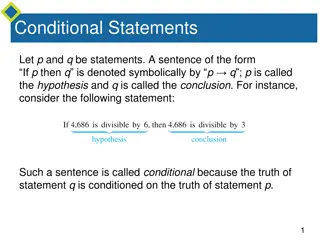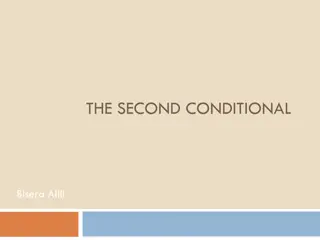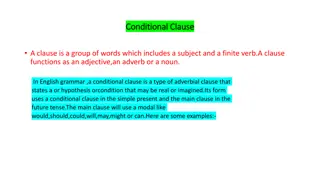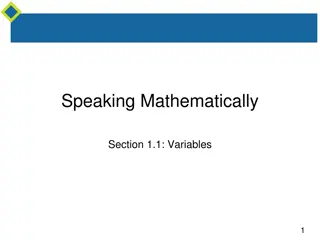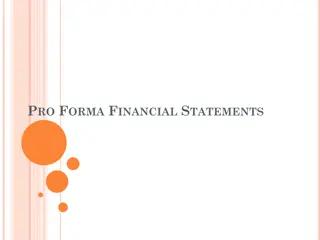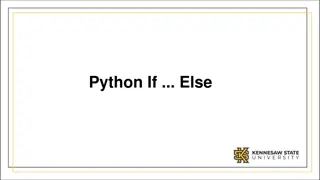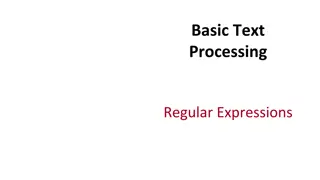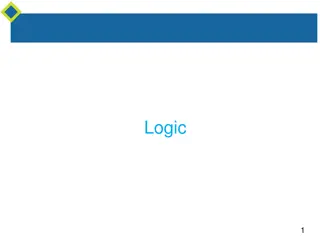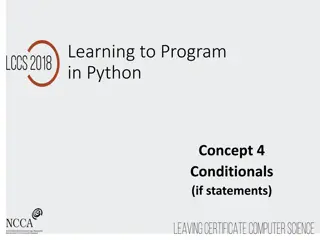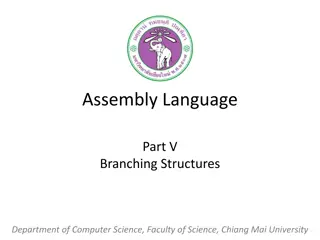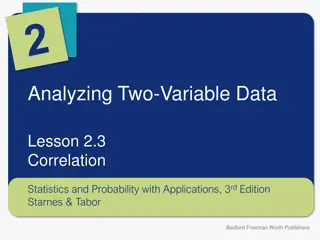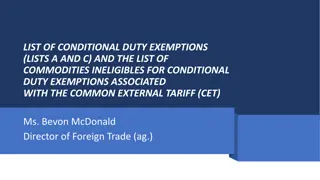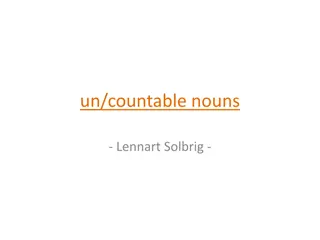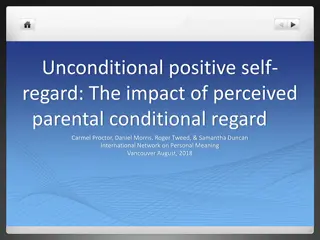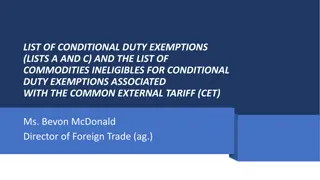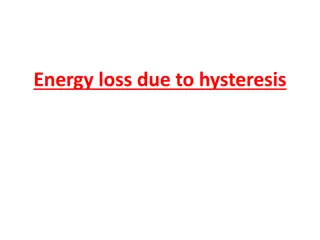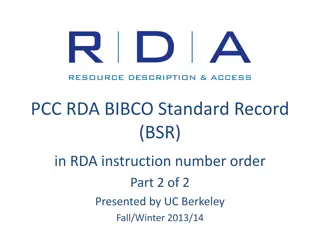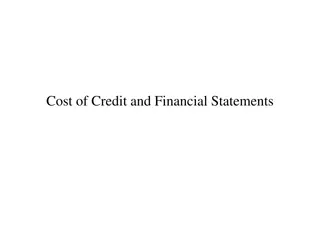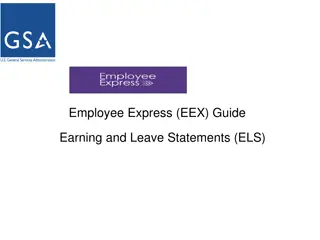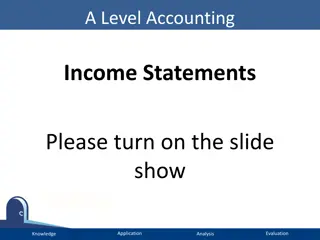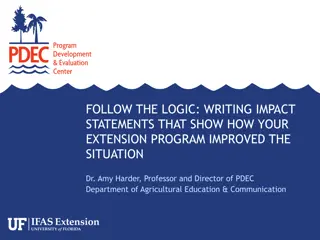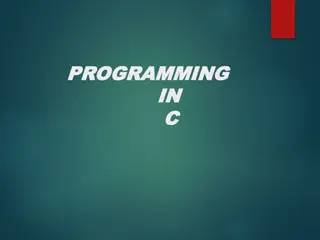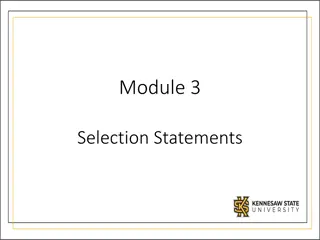Understanding Negations in Quantified and Conditional Statements
Explore the concept of negations in quantified statements, where the negation of a universal statement equates to an existential statement, and vice versa. Discover the importance of negations in universal conditional statements and their relationship to logical equivalence. Dive into examples of negating universal conditional statements to deepen your understanding of this fundamental mathematical concept.
Download Presentation

Please find below an Image/Link to download the presentation.
The content on the website is provided AS IS for your information and personal use only. It may not be sold, licensed, or shared on other websites without obtaining consent from the author. Download presentation by click this link. If you encounter any issues during the download, it is possible that the publisher has removed the file from their server.
E N D
Presentation Transcript
Negations of Quantified Statements All students in class passed this course There exists a student in class such that he/she did not pass this course. Let D denote the set of students in class, and let P(x) denote x passed this course. x D, P(x) x D, ~P(x) 1
Negations of Quantified Statements Thus The negation of a universal statement ( all are ) is logically equivalent to an existential statement ( some are not or there is at least one that is not ). The negation of an existential statement ( some are ) is logically equivalent to a universal statement ( none are or all are not ). Note that when we speak of logical equivalence for quantified statements, we mean that the statements always have identical truth values no matter what predicates are substituted for the predicate symbols and no matter what sets are used for the domains of the predicate variables. 3
Negations of Universal Conditional Statements Negations of universal conditional statements are of special importance in mathematics. The form of such negations can be derived from facts that have already been established. By definition of the negation of a for all statement, But the negation of an if-then statement is logically equivalent to an and statement. More precisely, 4
Negations of Universal Conditional Statements Substituting (3.2.2) into (3.2.1) gives Written less symbolically, this becomes 5
Example 4 Negating Universal Conditional Statements Write a formal negation for statement (a) and an informal negation for statement (b). a. people p, if p is blond then p has blue eyes. a person p such that p is blond and p does not have blue eyes. b. If a computer program has more than 100,000 lines, then it contains a bug. There is at least one computer program that has more than 100,000 lines and does not contain a bug. 6
The Relation among , , , and The negation of a for all statement is a there exists statement, and the negation of a there exists statement is a for all statement. These facts are analogous to De Morgan s laws, which state that the negation of an and statement is an or statement and that the negation of an or statement is an and statement. This similarity is not accidental. In a sense, universal statements are generalizations of and statements, and existential statements are generalizations of or statements. 7
The Relation among , , , and If Q(x) is a predicate and the domain D of x is the set {x1, x2, . . . , xn}, then the statements and are logically equivalent. 8
The Relation among , , , and Similarly, if Q(x) is a predicate and D = {x1, x2, . . . , xn}, then the statements and are logically equivalent. 9
Vacuous Truth of Universal Statements In general, a statement of the form is called vacuously true or true by default if, and only if, P(x) is false for every x in D. 10
Variants of Universal Conditional Statements We have known that a conditional statement has a contrapositive, a converse, and an inverse. The definitions of these terms can be extended to universal conditional statements. 11
Example 5 Contrapositive, Converse, and Inverse of a Universal Conditional Statement Write a formal and an informal contrapositive, converse, and inverse for the following statement: If a real number is greater than 2, then its square is greater than 4. Solution: The formal version of this statement is x R, if x > 2 then x2> 4. 12
Example 5 Solution cont d Contrapositive: x R, if x2 4 then x 2. Or: If the square of a real number is less than or equal to 4, then the number is less than or equal to 2. Converse: x R, if x2> 4 then x > 2. Or: If the square of a real number is greater than 4, then the number is greater than 2. Inverse: x R, if x 2 then x2 4. Or: If a real number is less than or equal to 2, then the square of the number is less than or equal to 4. 13
Necessary and Sufficient Conditions, Only If The definitions of necessary, sufficient, and only if can also be extended to apply to universal conditional statements. 14
Necessary and Sufficient Conditions, Only If Being born in U.S. is a sufficient condition for being eligible for U.S. citizenship. people p, if p is born in U.S, then p is eligible for U.S. citizenship. Being at least 18 years old is a necessary condition for being eligible to vote. people p, p is eligible to vote only if p is at least 18 years old. people p, if p is not at least 18 years old, then p is not eligible to vote. people p, if p is eligible to vote, then p is at least 18 years old. 15




